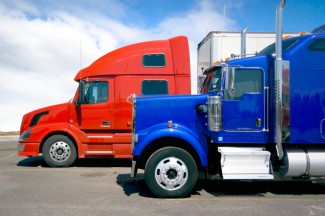A key element of the “Phase 2” heavy-duty vehicle fuel efficiency and greenhouse gas emissions standards adopted last fall was the program’s inclusion of trailers for the first time. That addition alone will deliver a cost-effective 7% improvement in tractor-trailer fuel efficiency. So it was disappointing to see the introduction of a bill in Congress (H.R.2705) to remove trailers from the program. That would be a big step backward for freight truck efficiency and would result in higher fuel costs for goods movement.
Big savings from trailer standards
Removing trailers from the Phase 2 program would mean future tractor-trailers would consume approximately 70,000 additional barrels of oil per day by 2030 and almost 100,000 barrels per day by 2040—more than the total highway fuel consumption of 17 of our 50 states in 2015. It also would unsettle a fuel efficiency program that received the support of engine and truck manufacturers, suppliers, fleets, and the environmental community. The Phase 2 heavy-duty program is projected to save 800,000 barrels of oil per day by 2040 and thereby reduce fleet operating costs, translating to consumers saving money on goods they purchase.
Tractor-trailers are responsible for two-thirds of all heavy-duty vehicle oil consumption. Getting major fuel efficiency gains from both tractors and trailers is key to an effective program, so the inclusion of trailers in Phase 2 is a crucial step forward. It would not make sense to overlook trailers—mostly boxes with few design features—while fine-tuning the engines powering the trucks that pull those trailers. Not only does trailer streamlining substantially reduce engine load, it also can permit downsizing of the tractor power train.
Trailer technologies are readily available
The standards rely on trailer advances that reduce drag through gap closing, side skirts, and undercarriage systems, along with improved tires and tire pressure monitoring. All of this equipment is readily available, thanks in part to California’s requirement that trailers be SmartWay® certified. Importantly, these technologies pay for themselves quickly; compliance cost for box trailers would be about $1,100 in 2027, which would pay back in fuel savings in less than two years and provide thousands of dollars in net savings over the 10-year life of the trailer.
Yet despite market availability and cost-effectiveness, uptake of these technologies lags. The sharing of trailers makes for a split incentive—the purchaser does not always reap the fuel savings benefit—and upfront costs may limit efficiency investments in a low-margin industry. Standards applied across the industry can help to address these barriers.
Win-win: a flexible program that points to the future
The Phase 2 program has numerous flexibility provisions for trailer companies as a whole and for small manufacturers in particular. The standards apply to dry and refrigerated box vans and to limited types of non-box trailers, thus reducing the impacts on small businesses. The agencies also granted a one-year extension for small businesses in complying with the standards.
Looking forward, the integration of tractor and trailer is among the biggest opportunities for future efficiency gains. Industry teams in DOE’s SuperTruck program are developing aerodynamic designs that would dramatically streamline tractor-trailer pairs, reducing fuel consumption, by our estimate, an additional 23% beyond the level of the Phase 2 standards.
Eliminating trailers from the Phase 2 heavy-duty program would squelch innovation in the trailer industry and increase costs to US businesses and consumers.
Photo: Volvo




